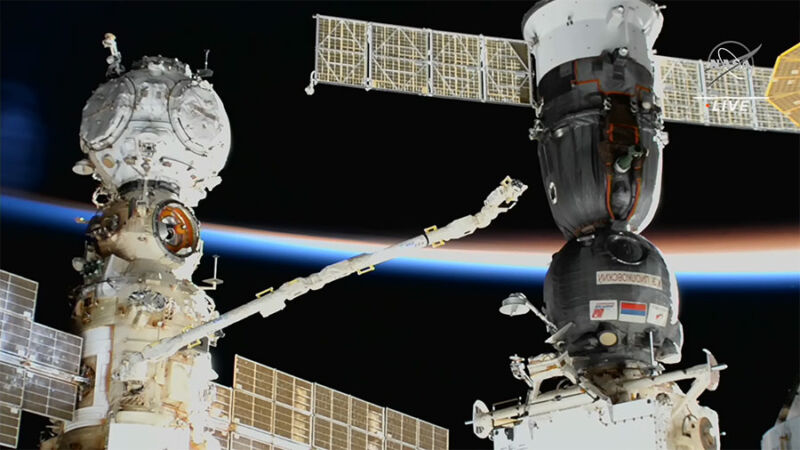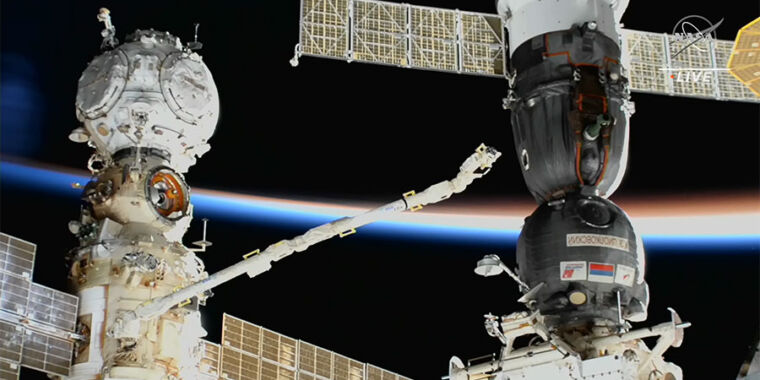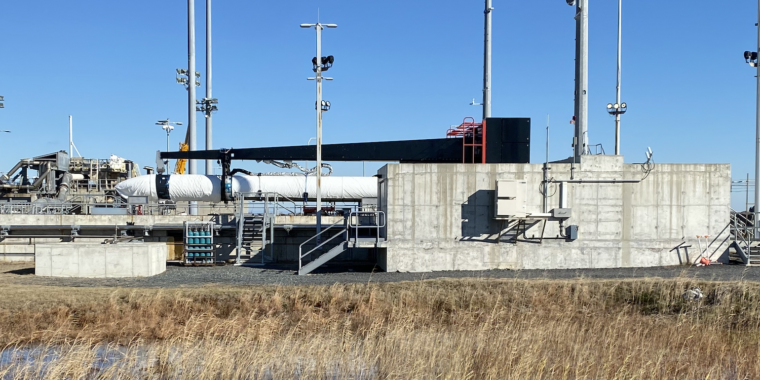
NASA TV
Since a Soyuz spacecraft began to leak coolant uncontrollably on Wednesday night, flight controllers at Roscosmos, NASA, and other International Space Station partners have been closely studying data from the incident.
Although there is no immediate danger to the seven astronauts on board the space station, this is one of the most serious incidents in the history of the orbiting laboratory, which has been continuously occupied for nearly a quarter of a century. Among the most pressing questions: Is the Soyuz MS-22 spacecraft safe to fly back to Earth? If not, when can a replacement, Soyuz MS-23, be flown up? And if there is an emergency, what do the three crew members slated to fly home on MS-22 do in the meantime?
NASA has not held any briefings since the incident and has only released a fairly bland update on its blog. But there is a lot happening behind the scenes, and this story will attempt to summarize what is known—and what is not—at this time.
What is known
Roscomos was never able to stanch the leak of the external cooling loop, so the leak only stopped when there was no coolant left. In the immediate aftermath, Russian flight controllers attempted to use the European robotic arm, attached to the Russian segment of the station, to observe the aft end of the Soyuz where the leak occurred. This 11-meter arm did not provide conclusive data.
As a result, NASA will use the 17.6-meter-long Canadarm2—also known as the space station remote manipulator system—to get a closer look at the Soyuz spacecraft. It’s hoped that this visual inspection, likely to take place over the weekend, will provide more definitive information on the source of the leak, its cause, and whether other elements of the Soyuz spacecraft were damaged. To facilitate this work, NASA will delay a spacewalk planned for Monday by astronauts Frank Rubio and Josh Cassada.
In other diagnostic work, Roscosmos tested the Soyuz MS-22 spacecraft’s thrusters early on Friday morning to determine whether there were any issues with its propulsion system. This test, according to sources, was nominal.
The biggest concern, however, is the flight computers on board the Soyuz spacecraft overheating. They are used to calculate a precise entry for the Soyuz to ensure it lands in a designated area of Kazakhstan, near recovery forces. Without the flight computers, the procedure would have to be done manually. This is possible but far from optimal, as the area in which the Soyuz might land would be vast.
During the thruster test on Monday morning, the flight computer warmed up, but it did not exceed temperature limits, according to a source. There was a speculative report in the Russian press that the Soyuz MS-22 spacecraft reached an internal temperature of 50 degrees Celsius, but Roscosmos said this is not accurate.








